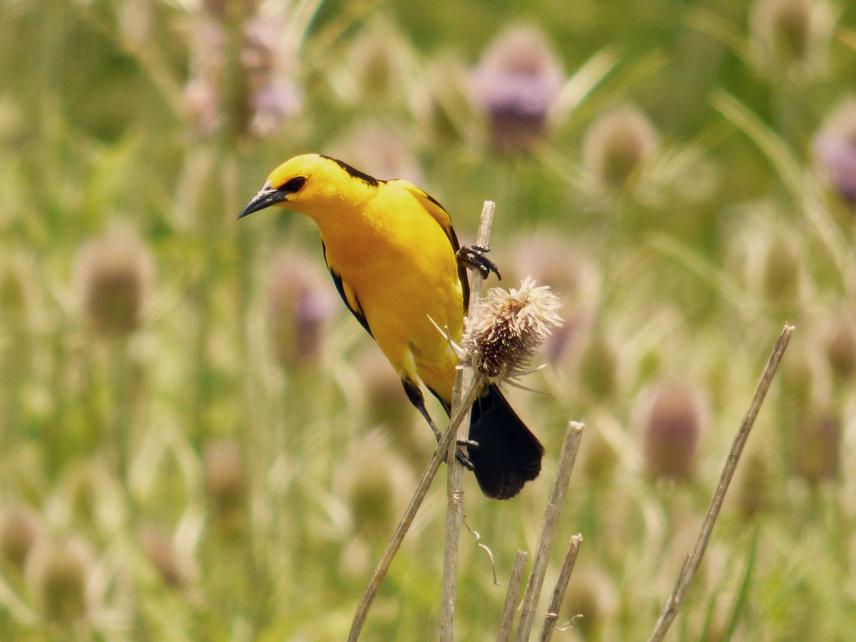María Inés Pereda
Other projects
4 Dec 2017
Colony Guardians and Predator Exclusions to Protect Saffron-Cowled Blackbirds Populations in Argentina
The aim of the work is to generate the necessary knowledge to create an action based conservation strategy to protect the reproductive colonies of the Saffron-cowled Blackbird.

The Saffron-cowled Blackbird (Xanthopsar flavus) is a species original from the Temperate Grasslands of Southern America. However, these ecosystems have been greatly damaged due to agricultural and livestock practices, threatening the species habitat in all of its distribution. Furthermore, the blackbird suffers from poaching to be sold in the black market, for all these reasons it is considered as Vulnerable (BirdLife 2012).
In Argentina, on the basis of data gathered during 2013 and 2014, a reduction in the population size of this Blackbird was estimated at 80.4 %, with a populations of 500-600 individuals. Therefore, in 2015, after the escalated concern, a group of institutions prospected the area to find colonies and protect them. However, only five colonies were found and four identified fledglings survived awakening the need to design conservation strategies based on scientific knowledge.
The aim of the work is to generate the necessary knowledge to create an action based conservation strategy to protect the reproductive colonies of the Saffron-cowled Blackbird and raise the reproductive success of the populations in Entre Rios. We will work to:
(1) detect the reproductive colonies and know the actual distribution of the species in Entre Rios,
(2) understand the impact of predators and brood parasites over the reproductive success of the colonies and tests different conservation techniques to define a conservation strategy for both provinces
(3) know the impact of illegal wildlife trade to mitigate poaching and illegal markets and advocate for the creation of political policies and education programs.
Defining the real distribution of a threatened species is the first phase to design active conservation strategies. In this context, with the gathered knowledge on the threats we will achieve a conservation strategy following the “Colony Guardians”methodology (Roesler et al. in prep.) to apply both in the populations of Corrientes and Entre Rios.